
The Choreography of Childhood in Jonathan Hobin’s Cry Babies
Text by Sasha Gora
A Boy Scout smears lipstick across his mouth, his lips and skin all the same. A girl wears a feathered headdress, a cigarette between her fingers and a bottle of booze in her hands. These scenes, which suggest that the kids are not alright, are two of the life-sized photographs in Jonathan Hobin’s new photo series Cry Babies.
Bright and exceptionally detailed, Cry Babies challenges colloquial representations of childhood. Hobin’s earlier series In the Playroom (2010) suggested a loss of childhood innocence through exposure to mass media reports of the violent power play of adults. Cry Babies puts childhood itself in the spotlight. But not as an innocent victim. Here it is complex, challenging, dark and troubling.
Philippe Ariès’ seminal 1960 Centuries of Childhood: A Social History of Family Lifetraces the development of a western concept of childhood and argues that it was only discovered in the 17th century. In the middle ages, it didn’t exist. Helen Schwartzman expands on this in her chapter “The Invention of Childhood”: “All children, because of the fact that they are born into a social environment, are affected by a construct that is peculiarly historical and, as such, has undergone many changes and reinterpretations in all societies.”
Hobin’s practice reveals these constructs. He creates arresting images that challenge stereotypes and engage with taboos. Rooted in storytelling, his work takes visual cues from popular culture, historical references, cinema and literature. What he produces are contemporary tableaux vivants. Gender, puberty, Neverland and the struggle to grow up, war and violence, religion, racial stereotypes, physical illnesses – the sixteen photos arranged in eight pairs of two address the dissonances in the choreography of childhood. Presented as photo diptychs that appear as images within lockets and “living” video portraits, Cry Babies exposes the contradictions and artifice rooted in Victorian era beliefs that continue to inform idealized representations of childhood in popular culture today. A locket is a way to wear an image close to one’s heart. They are romantic, sweet keepsakes and gifts, tidy compartments for memories. Hobin appropriates this as the format for his diptychs, suggesting dark secrets that are carefully kept tucked away.
Cry Babies calls out the bluff of candy-coated images of childhood. To suggest that childhood is only sugar and spice and everything nice is to engage in an adult game of make-believe.
1.Helen Schwartzman, Transformations: The Anthropology of Children’s Play (New York: Springer, 2013), 9.
« Viewer discretion is advised » : Cry Babies et le mythe de l’enfance innocente
Texte de Vincent Marquis
« The following program includes graphic images and mature subject matter intended for adult audiences. Viewer discretion is advised » .
L’avertissement de Global News est clair : la plus récente œuvre photographique de l’artiste canadien Jonathan Hobin risque de choquer, de déranger, d’offusquer. On ne saurait affirmer le contraire : Cry Babies est, en quelque sorte, une suite intensifiée à la série In The Playroom (2010) qui avait suscité bon nombre de débats au sujet des manières acceptables de représenter l’enfant dans les médias.
Pour Hobin, Cry Babies est le fruit d’une réflexion au sujet de l’enfant comme symbole sacré de pureté et d’innocence. La culture populaire occidentale abonde effectivement d’exemples en ce qui a trait à la représentation idéalisée de l’enfance – on a qu’à penser aux images de Norman Rockwell, à Dick et Jane, ou aux innombrables publicités dans lesquelles des enfants sont montrés comme des êtres séraphiques . Contempler les photographies de Hobin, dont la forme ovale rappelle celle des portraits que l’on protège dans des médaillons, c’est désacraliser l’image de l’enfant et comprendre qu’il vit dans un monde aussi sombre que le nôtre.
Par exemple, l’un des diptyques aborde les pressions sociales entourant l’identité de genre en présentant, d’une part, une jeune fille tenant une poupée dont elle a sauvagement coupé les cheveux et, d’autre part, un scout au visage barbouillé de rouge à lèvres et de larmes. « You’re crying because some people don’t think you should wear makeup » , lui explique Hobin. Un autre aborde l’impact des conflits armés en montrant un enfant soldat portant machette et munitions aux côtés d’une jeune kamikaze dévoilant la ceinture d’explosifs qui lui est attachée.
Dans chacun des seize portraits, Hobin présente ses modèles comme étant à la fois impliqués et affectés par des problématiques que l’on considère trop souvent comme exclusivement « adultes ». En ce sens, nous dit l’artiste, Cry Babies incarne « l’inévitable et tendue cohabitation des anxiétés personnelles de l’enfant et des représentations idéalisées de ce dernier » . La déconstruction de cette idéalisation va toutefois plus loin. Selon l’artiste, reconnaître cette tristesse ou ce tracas de l’enfant revient à déstabiliser l’illusion de statut familial et de gloire patriarcale soutenue par le mythe de l’innocence. Comme quoi, lorsqu’on leur en donne la chance, la vérité sort de la bouche des enfants.
1.« 16×9 – FULL STORY: Artist Provocateur », Global News, accessed January 20, https://www.youtube.com/watch?v=2pMQZMhuJfk.
2. Kristen Drotner, « The co-construction of media and childhood », dans The Routledge International Handbook of Children, Adolescents and Media, éd. Dafna Lemish (Londres et New York : Routledge, 2013), 16.
3. « 16×9 – FULL STORY: Artist Provocateur », Global News.
4. Jonathan Hobin, conversation avec l’artiste, 30 janvier 2014.
2. Kristen Drotner, « The co-construction of media and childhood », dans The Routledge International Handbook of Children, Adolescents and Media, éd. Dafna Lemish (Londres et New York : Routledge, 2013), 16.
3. « 16×9 – FULL STORY: Artist Provocateur », Global News.
4. Jonathan Hobin, conversation avec l’artiste, 30 janvier 2014.
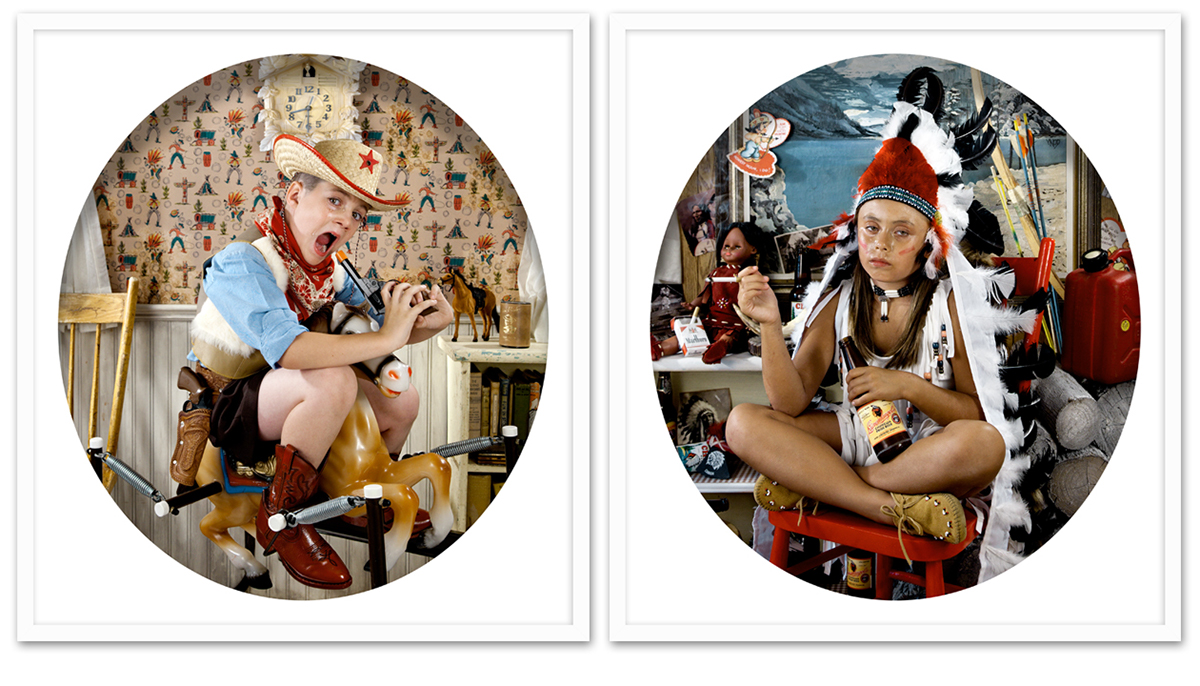
Lonely Ranger / Honest Injun

Scout's Honour / Ragamuffin

Pickaninny / Aunt Mammy

Eye Spy / Charades
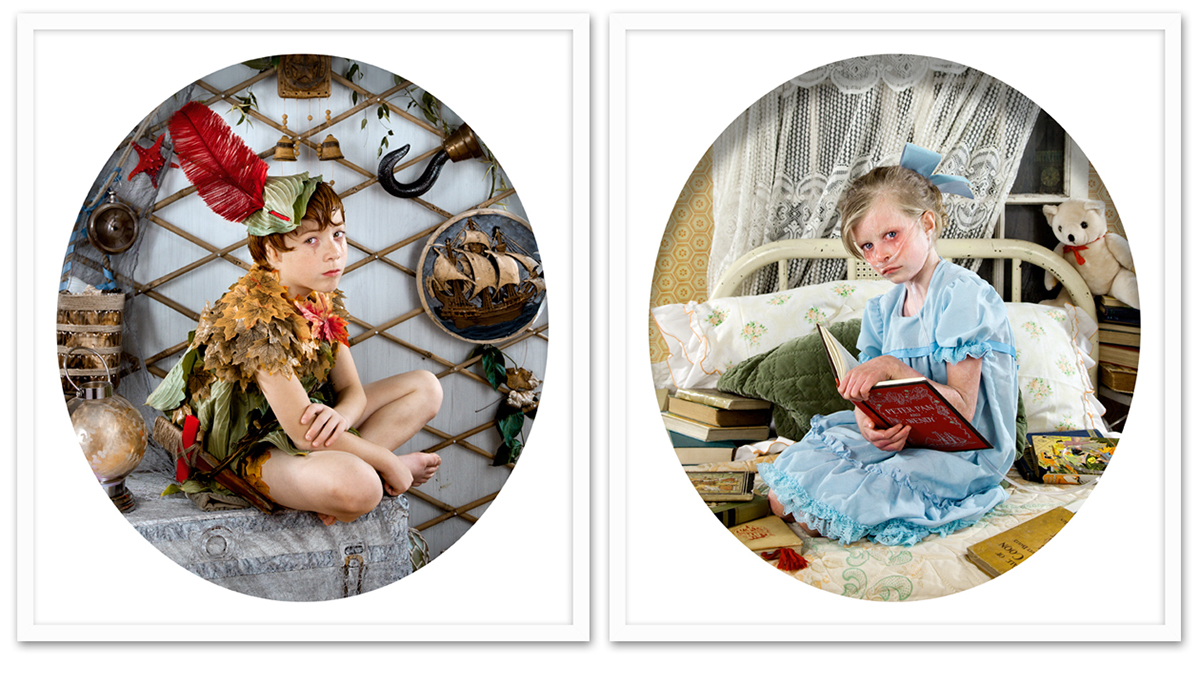
Lost Boy / Short Story
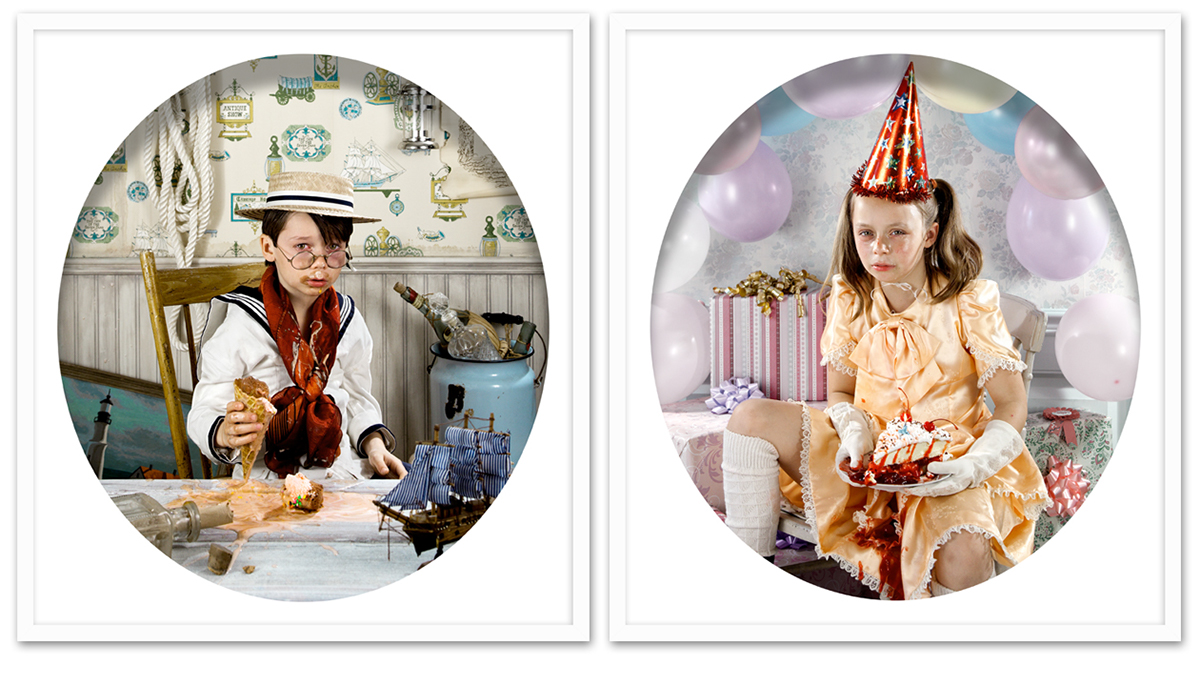
The Mess / The Gift
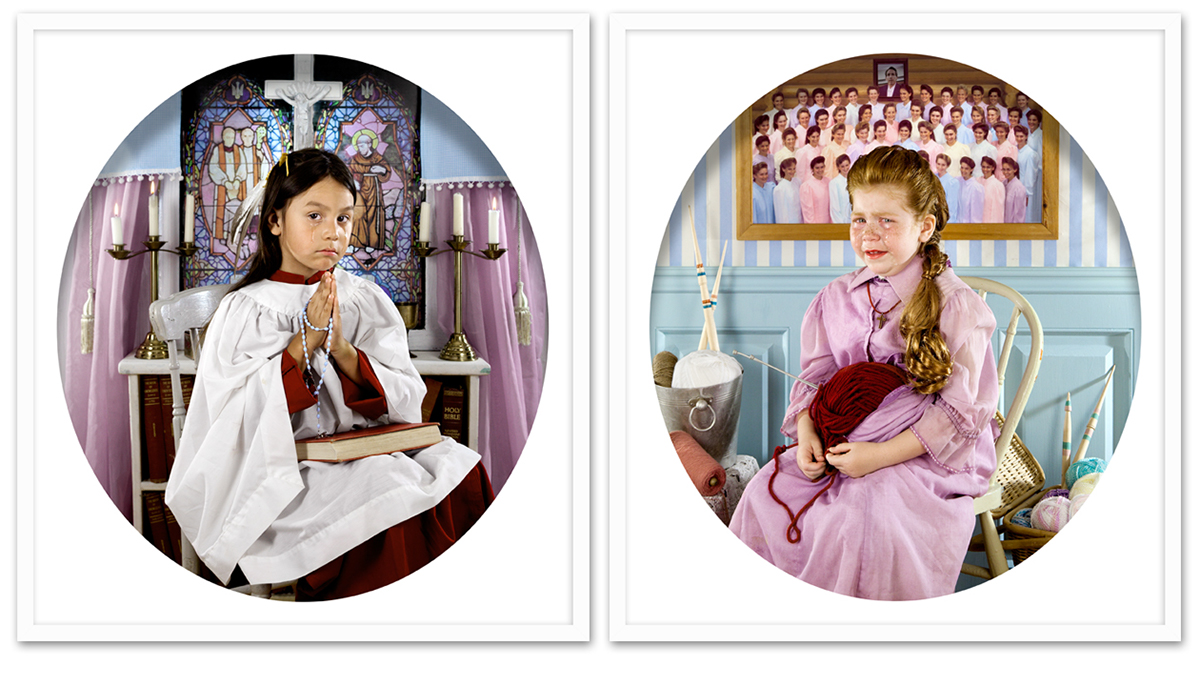
Altered Boy / Virgin Married
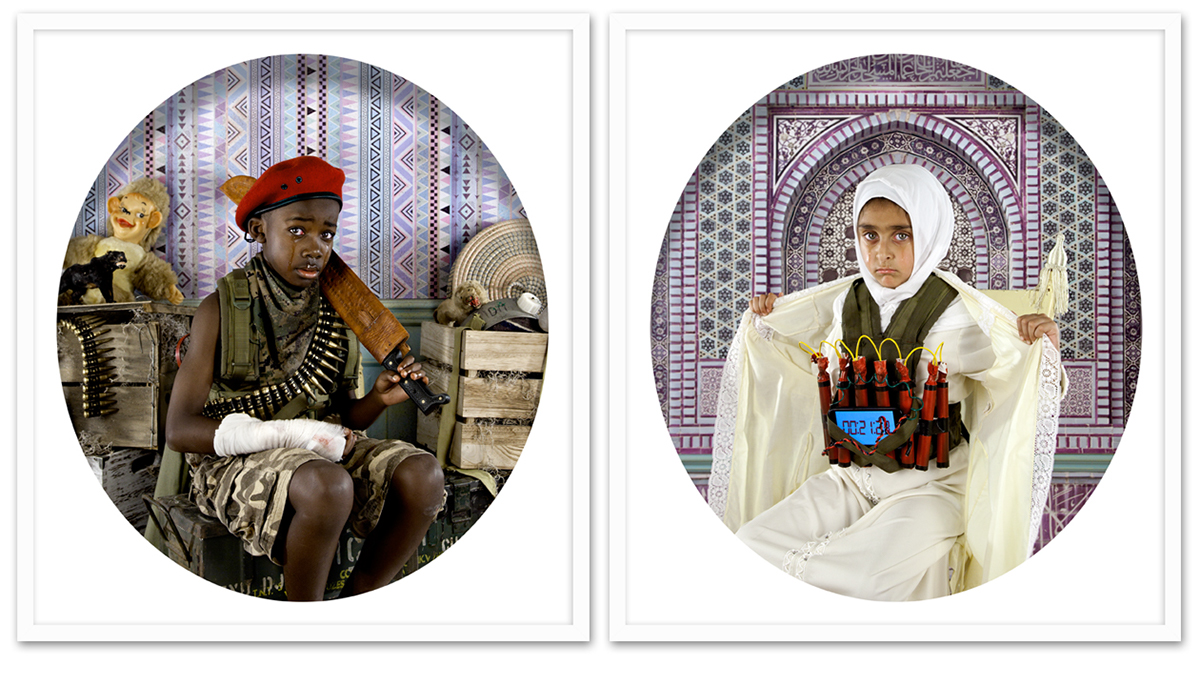
Toy Soldier / Game Over
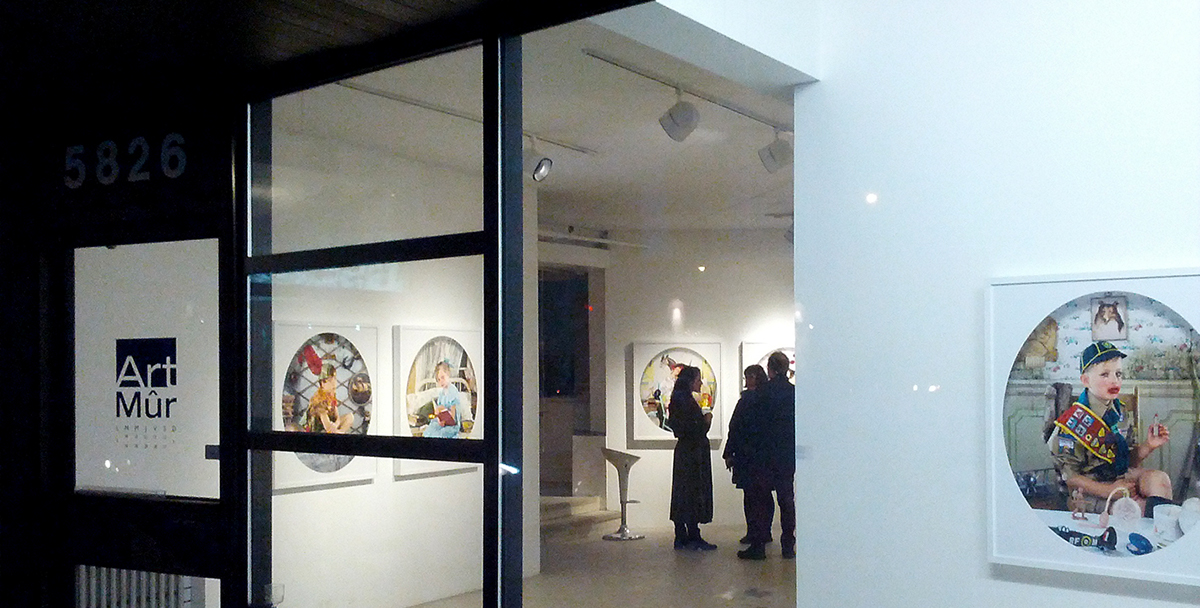




Scout's Honour

Lonely Ranger (detail)

The Gift (detail)

Charades (detail)

Virgin Married (detail)

Short Story (detail)

Cry Babies (video installation)


